John Kørner tackles the British sports of cycling, running and drinking
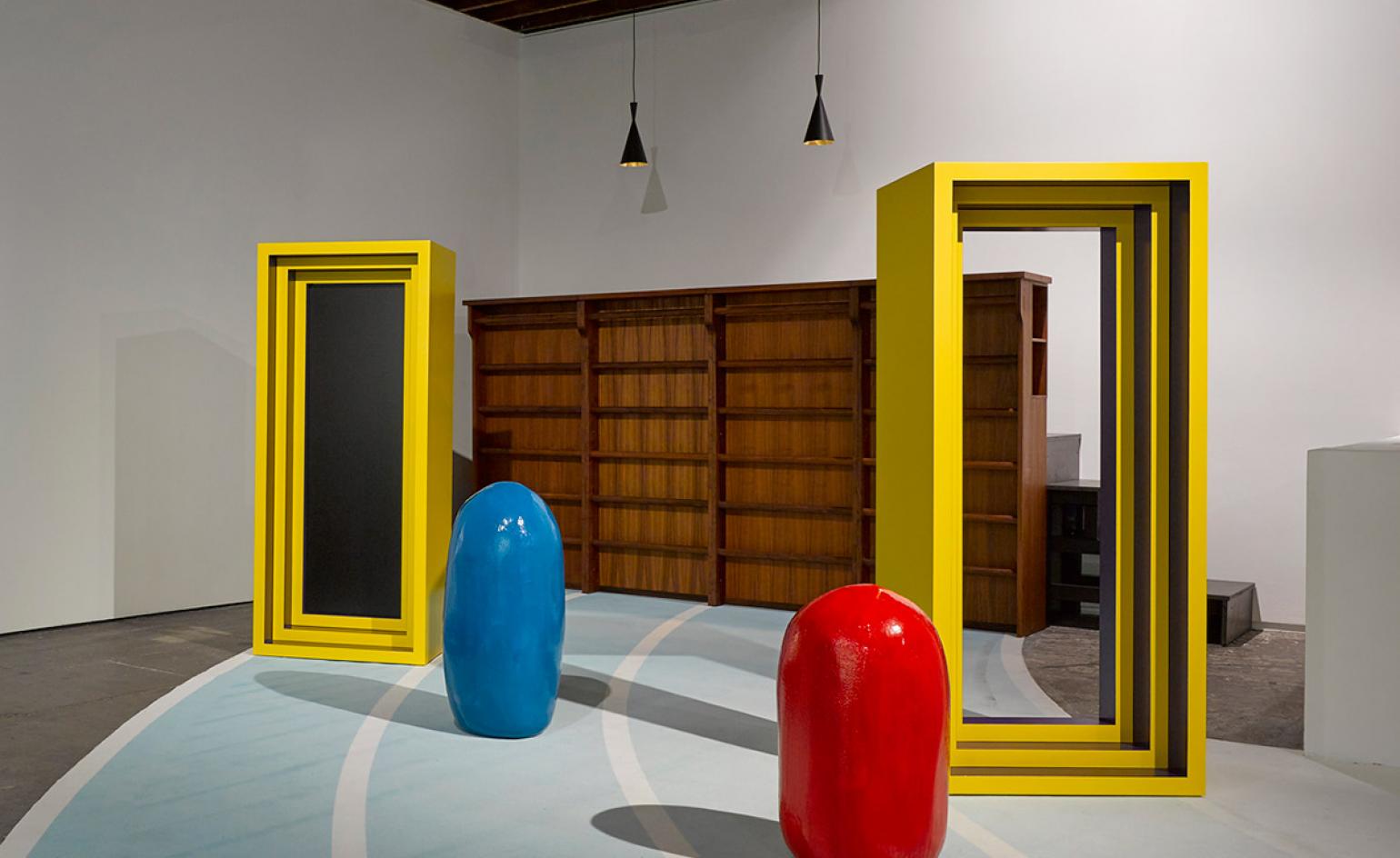
‘The pace of contemporary life has never moved so fast,’ says Copenhagen-based artist John Kørner, while peddling comically slowly on his bike installation at Victoria Miro’s Wharf Road gallery in London. The bike is attached to a moving platform topped with a stall of chairs built for visitors, parallel to a vast, 12-panel painting charting a sunrise and set. The installation is designed to ‘slow us down, and see the painting from a different perspective’.
The exhibition – ‘Life in a Box’ – revolves around the physical, emotional, and conceptual constraints of time passing, and the ways in which we attempt to ‘outrun’ them. Kørner depicts runners in cross-country garb, shifting in-and-out of focus into vivid yellow and red backgrounds, as if we're just missing them as they zoom past. In the upstairs gallery, a sweeping, floridly-coloured race track covers the floor; the finish-line dissected by a giant climbing frame that also functions as a bar, which Kørner encourages you to climb up, and order a shot.
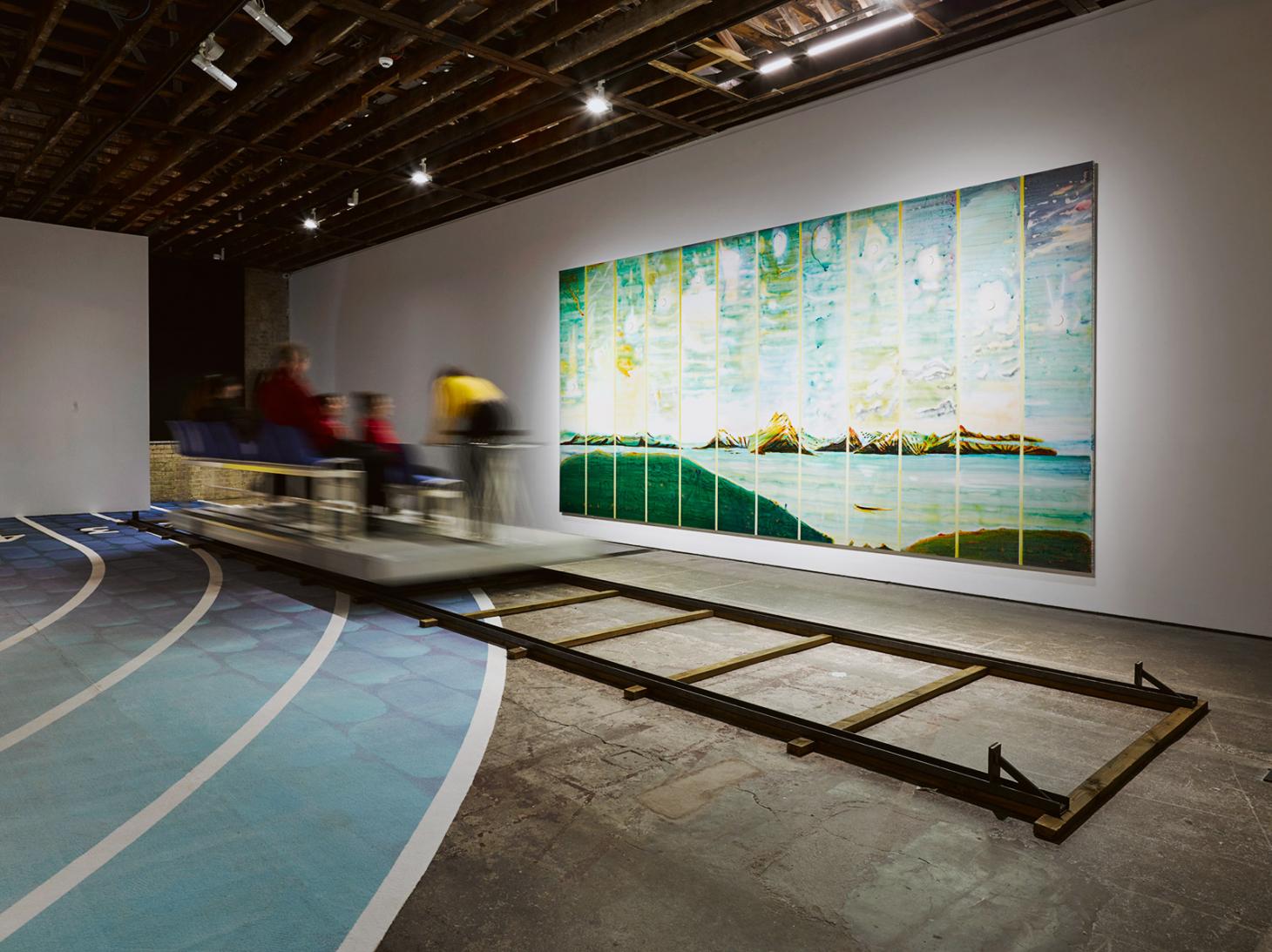
Installation view of ‘John Kørner: Life in a Box’ at Victoria Miro, London.
The bar, Kørner explains, is a reflection of the time-travelling transformation we undergo when drinking alcohol. ‘It seems that lots of people change personality when they go drinking. Especially in the UK, there’s so many pubs – and I'm fascinated by this culture. It has a great impact on the demeanour. For instance, I smile more when I drink. For some people, it’s a way of escaping to a place where time moves differently.’ For better or worse.
There are lighthearted notes to the exhibition, but, as is common in Kørner’s complex practice, it’s also dense with metaphor, symbol, and serious commentary. On what exactly, Kørner leaves largely up to the viewer. The snow-peaked mountains he paints, for instance, are not meant to represent a particular range, but the idea of a mountain more broadly. Here, they seem to represent natural order and peace, offering refreshing calm from the self-defeating, fast-paced racing occuring elsewhere in the gallery.
RELATED STORY
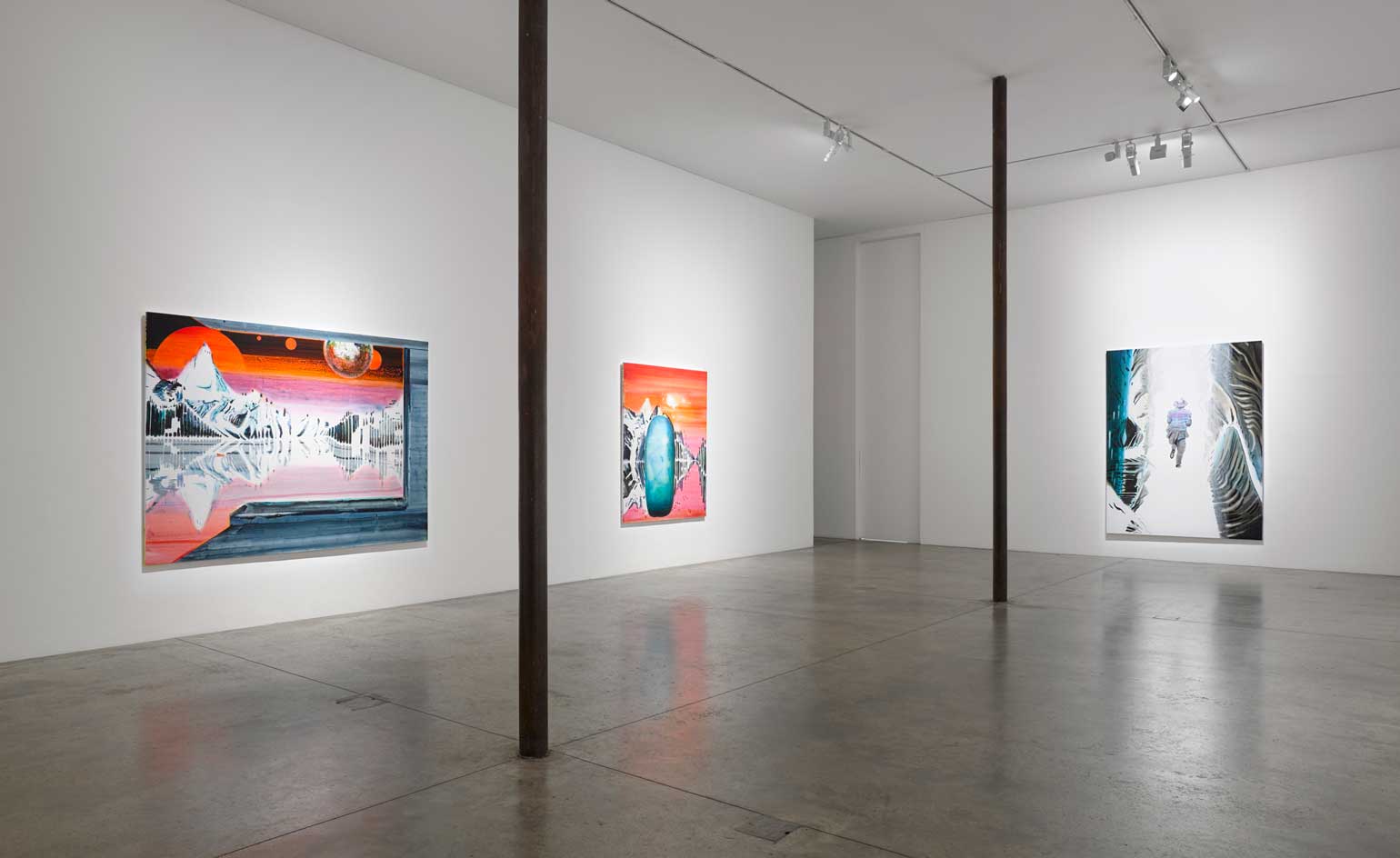
Installation view of ‘John Kørner: Life in a Box’ at Victoria Miro, London. © The artist. Courtesy of the artist and Victoria Miro, London/Venice
Likewise the boxes seen throughout the exhibition have manifold meaning. At times, they appear prison-like and claustrophobic, drawing you in like a box set. At other times, they are protective; containing within them calming, vast green planes. For the artist, ‘they refer to anything from mental “boxes”, to apartments, to crates of apples, to TV sets, to the tall walls of a valley’. Rather than prescribe meaning, his ‘main aim is to communicate with the viewer, and have my work resonate with something in their life’.
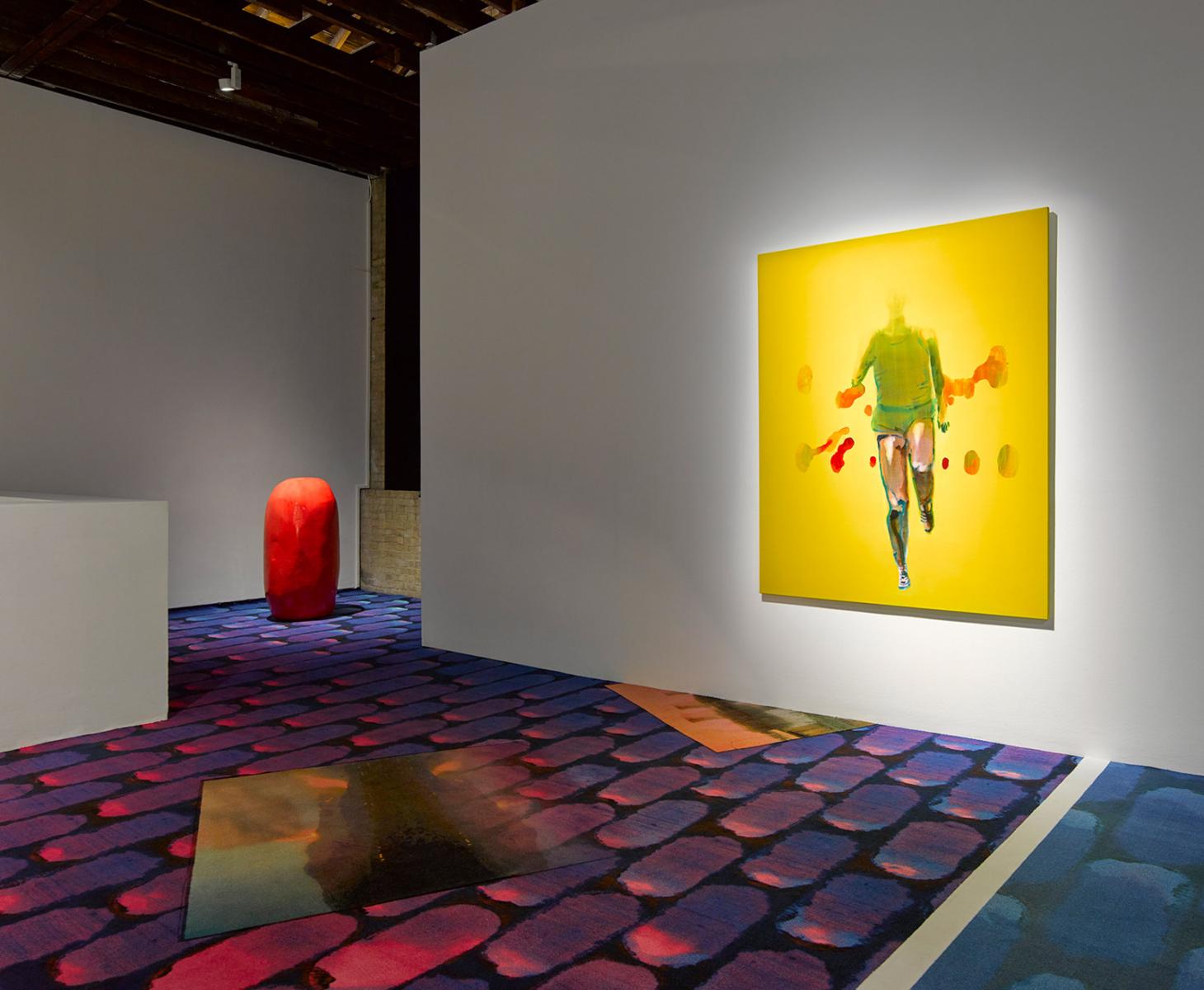
Installation view of ‘John Kørner: Life in a Box’ at Victoria Miro, London.
The exhibition also contains a number of Kørner's storied ‘problems’: egg-shaped sculptures that represent the universal nature of issues, questions and conundrums. The idea has followed Kørner for much of his career, first appearing in the years after his graduation from the Royal Danish Academy of Fine Arts Copenhagen in 1988. At Victoria Miro, they take the form of bright, primary-coloured sculptures dotted along the race track, obstacles in the way of the theoretical runners chasing their goals; and gallery visitors navigating the space, forcing them to move slowly and deliberately.
Kørner has long been of the opinion that art should exercise the imagination like a bicycle stretches the legs. He tests the theory literally, and runs the imagination ragged, in what is an edifying, dense display. Afterwards, you can climb the bar for a refreshing, transformative tipple.
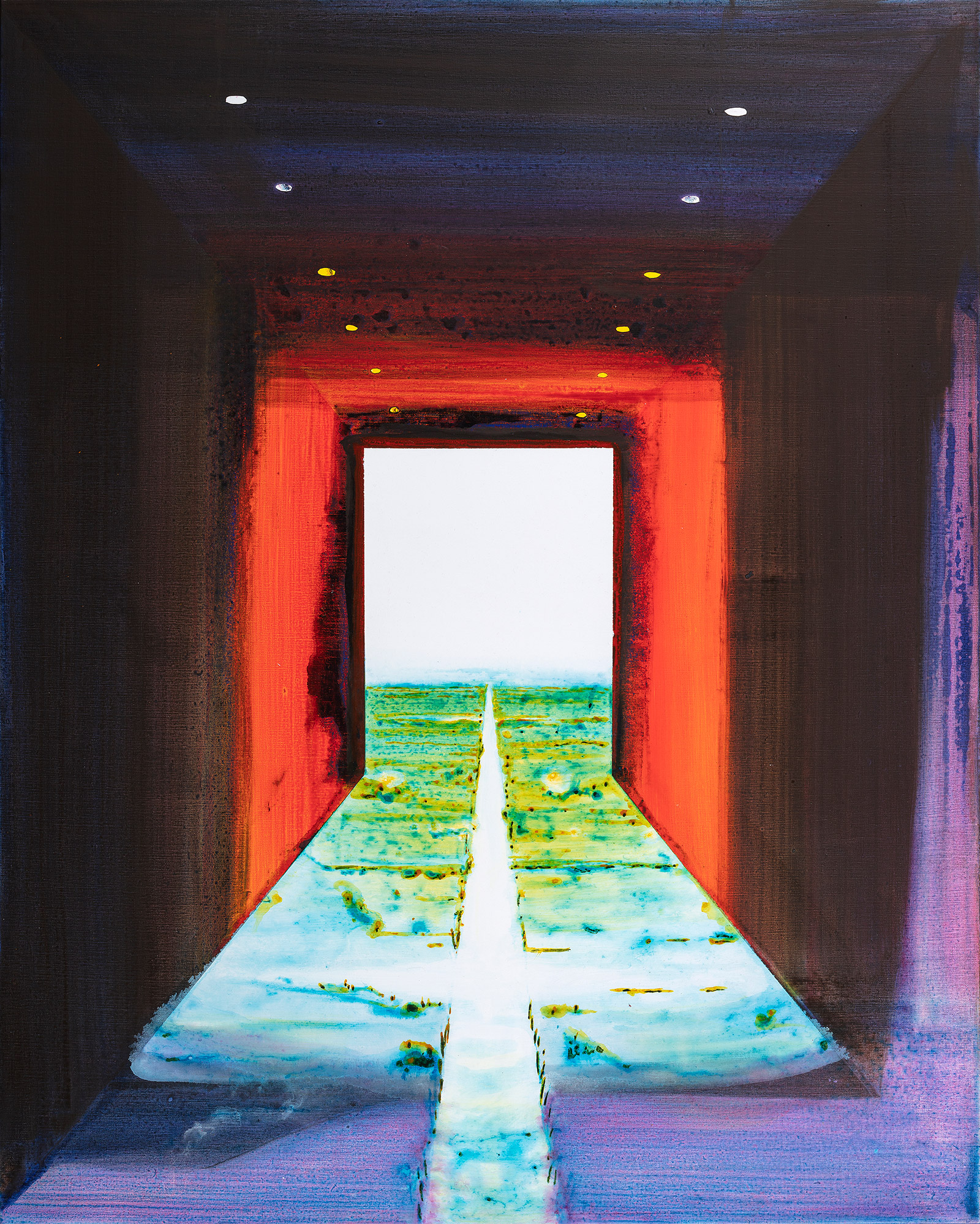
Water in the corridor, 2019, by John Kørner, acrylic on canvas.
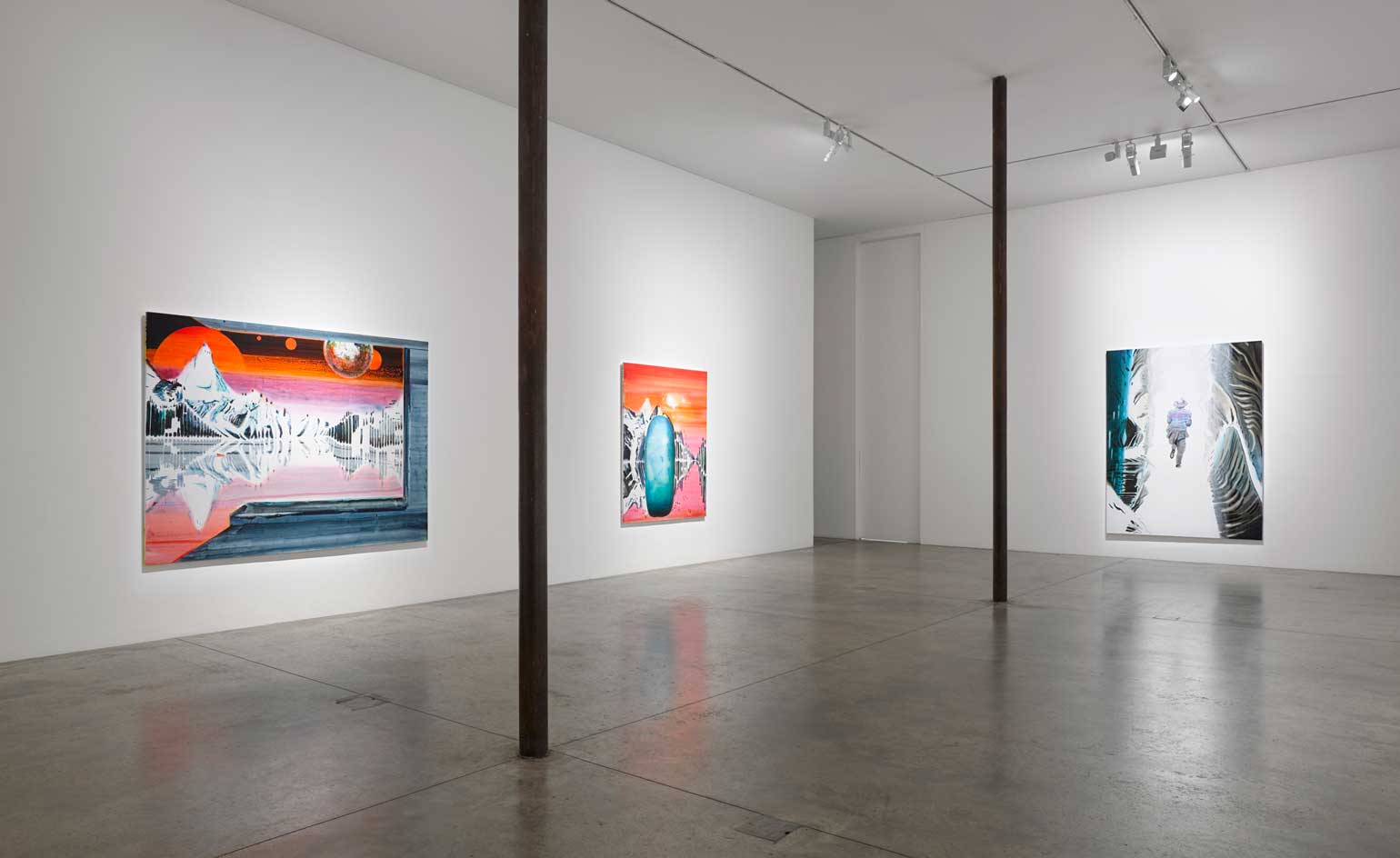
Installation view of ‘John Kørner: Life in a Box’ at Victoria Miro, London.
INFORMATION
‘John Kørner: Life in a Box’ is on view until 23 March. For more information, visit the Victoria Miro website
Wallpaper* Newsletter
Receive our daily digest of inspiration, escapism and design stories from around the world direct to your inbox.
ADDRESS
Victoria Miro
16 Wharf Road
London N1 7RW
Elly Parsons is the Digital Editor of Wallpaper*, where she oversees Wallpaper.com and its social platforms. She has been with the brand since 2015 in various roles, spending time as digital writer – specialising in art, technology and contemporary culture – and as deputy digital editor. She was shortlisted for a PPA Award in 2017, has written extensively for many publications, and has contributed to three books. She is a guest lecturer in digital journalism at Goldsmiths University, London, where she also holds a masters degree in creative writing. Now, her main areas of expertise include content strategy, audience engagement, and social media.
-
 Put these emerging artists on your radar
Put these emerging artists on your radarThis crop of six new talents is poised to shake up the art world. Get to know them now
By Tianna Williams
-
 Dining at Pyrá feels like a Mediterranean kiss on both cheeks
Dining at Pyrá feels like a Mediterranean kiss on both cheeksDesigned by House of Dré, this Lonsdale Road addition dishes up an enticing fusion of Greek and Spanish cooking
By Sofia de la Cruz
-
 Creased, crumpled: S/S 2025 menswear is about clothes that have ‘lived a life’
Creased, crumpled: S/S 2025 menswear is about clothes that have ‘lived a life’The S/S 2025 menswear collections see designers embrace the creased and the crumpled, conjuring a mood of laidback languor that ran through the season – captured here by photographer Steve Harnacke and stylist Nicola Neri for Wallpaper*
By Jack Moss
-
 The art of the textile label: how British mill-made cloth sold itself to Indian buyers
The art of the textile label: how British mill-made cloth sold itself to Indian buyersAn exhibition of Indo-British textile labels at the Museum of Art & Photography (MAP) in Bengaluru is a journey through colonial desire and the design of mass persuasion
By Aastha D
-
 Artist Qualeasha Wood explores the digital glitch to weave stories of the Black female experience
Artist Qualeasha Wood explores the digital glitch to weave stories of the Black female experienceIn ‘Malware’, her new London exhibition at Pippy Houldsworth Gallery, the American artist’s tapestries, tuftings and videos delve into the world of internet malfunction
By Hannah Silver
-
 Ed Atkins confronts death at Tate Britain
Ed Atkins confronts death at Tate BritainIn his new London exhibition, the artist prods at the limits of existence through digital and physical works, including a film starring Toby Jones
By Emily Steer
-
 Tom Wesselmann’s 'Up Close' and the anatomy of desire
Tom Wesselmann’s 'Up Close' and the anatomy of desireIn a new exhibition currently on show at Almine Rech in London, Tom Wesselmann challenges the limits of figurative painting
By Sam Moore
-
 A major Frida Kahlo exhibition is coming to the Tate Modern next year
A major Frida Kahlo exhibition is coming to the Tate Modern next yearTate’s 2026 programme includes 'Frida: The Making of an Icon', which will trace the professional and personal life of countercultural figurehead Frida Kahlo
By Anna Solomon
-
 A portrait of the artist: Sotheby’s puts Grayson Perry in the spotlight
A portrait of the artist: Sotheby’s puts Grayson Perry in the spotlightFor more than a decade, photographer Richard Ansett has made Grayson Perry his muse. Now Sotheby’s is staging a selling exhibition of their work
By Hannah Silver
-
 From counter-culture to Northern Soul, these photos chart an intimate history of working-class Britain
From counter-culture to Northern Soul, these photos chart an intimate history of working-class Britain‘After the End of History: British Working Class Photography 1989 – 2024’ is at Edinburgh gallery Stills
By Tianna Williams
-
 Celia Paul's colony of ghostly apparitions haunts Victoria Miro
Celia Paul's colony of ghostly apparitions haunts Victoria MiroEerie and elegiac new London exhibition ‘Celia Paul: Colony of Ghosts’ is on show at Victoria Miro until 17 April
By Hannah Hutchings-Georgiou